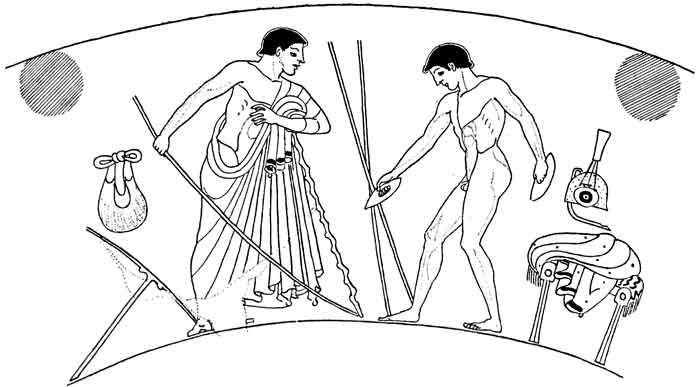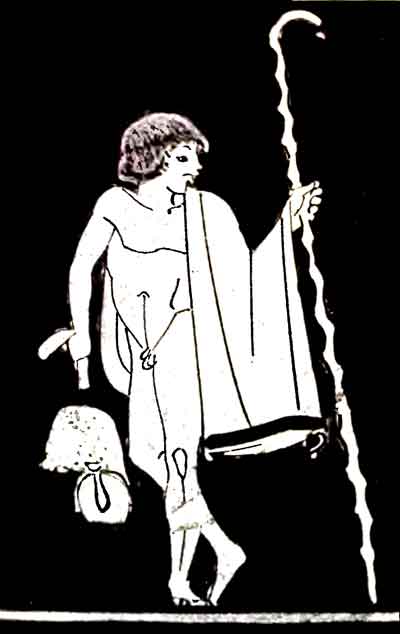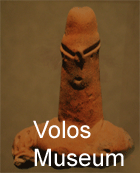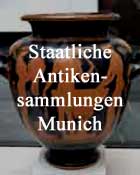|
|
Image Source tr005
L. D. Caskey:
The athlete on side A is shown in a typical attitude of the broad jump. His weight is on his right leg which is bent; his left is extended before him with the ball of the foot touching the ground; his arms are swung forward to a little above the horizontal; his body is drawn back to maintain an equilibrium. The moment represented is at the end of the preliminary upward swing of the weights. These are of the more usual of the two prevailing types, consisting of " a nearly semi-circular piece of metal or stone, with a deep recess in the straight, lower side which affords a grip." The end held to the front is considerably larger than the other. The bearded paedotribos stands facing the youth. He wears a himation, and leans forward supporting himself on a knotted stick held in his left hand. With his right he holds out a long rod, as if to give emphasis to his remarks. In the field, between the two figures, are a pair of measuring rods, crossed. These seem to have no special significance, but to have been added to improve the composition. A small boy standing behind the jumper is an interested spectator of the scene . He has blond hair and wears a chlamys; in his left hand he holds the athlete's staff, in his right his aryballus and sponge. Above, a sling-shaped bag in which the halteres were carried is suspended from the wall. On side B the positions of the trainer and athlete are reversed. The former stands in profile to left, with his right leg advanced and his body bent forward slightly. His hands holding the weights are lowered, one being swung out to the front, the other to the rear. The halteres are larger and of a different type, consisting of an oval piece of stone with pointed ends, and hollowed out to admit the fingers. The attitude is in this case less clear,but probably it represents a moment during the downward swing of the weights which succeeded the position illustrated by the youth on side A. Actually the arms would be kept parallel, but the artist has sacrificed photographic accuracy in order better to display the athlete's whole body. The trainer this time a youth wears a himation and shoes, leans upon a knotted staff which is propped under his left armpit, and holds a long rod in his right hand. The athlete's himation is laid on a stool behind him, and above it his strigil, aryballus and sponge are suspended. Behind the trainer is a pick used to soften the ground of the skamma, or landing place, for the jump, and a bag for halteres hangs above it. The figures on both sides give the impression of having been drawn more for their own sake than as elements in a carefully thought out scheme of decoration. They are given plenty of space, and the arms and legs, the various rods and knotted sticks, make a medley of crossing lines. Our attention, like that of the trainers and the small brother, is focussed upon the two athletes and their manipulation of the weights. These long-legged, powerfully developed youths are drawn in a few simple strokes with a freedom and understanding of anatomy which reveal the hand of a master of the first rank. Their bodies are shown in three-quarter view without a trace of the archaism which is still pronounced in the work of Euphronios and Phintias, and of Douris in his earlier period. All text is available under the terms of the GNU Free Documentation License
 |
|||||||||||||







